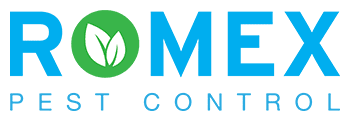
Retail Store Pest Control
Managing a retail store means keeping an eye on countless details, but one that can't be overlooked is pest control. A pest-free environment protects your products and ensures the safety and comfort of both customers and staff. That's why having a comprehensive pest control checklist is a game-changer.
Your checklist serves as the frontline defense against infestations, reducing the risk of food contamination and safeguarding your store's reputation. It's not just about reacting to issues; it's about proactive prevention. From bait stations to monthly inspections, you'll stay ahead of pests and in line with health regulations.
Ensuring your store complies with local health and safety regulations is non-negotiable. With the right pest control measures in place, you'll minimize health risks and maintain the integrity of your retail space. Let's dive into what makes an effective pest control checklist for your retail store.
Importance of Pest Control for Retail Stores
Protecting Customer Health and Safety
As a retail store manager, you're committed to the well-being of your customers. Neglecting pest control can expose customers to health hazards. Pests such as rodents, cockroaches, and flies are notorious for carrying diseases. Their presence in your store can lead to the contamination of food products and surfaces, posing a risk of foodborne illnesses.
In retail environments that feature a variety of fresh food options, from bakeries to deli counters, the risk magnifies. Regular pest management ensures your store is sanitary and safe for everyone who walks through your doors. This vigilance is particularly crucial in areas with regional pest pressures, where the climate may favor the proliferation of these unwanted guests.
Preventing Damage to Goods and Property
Aside from health risks, pests are a tangible threat to your inventory. Stored product pests like moths and beetles can infest and spoil large quantities of goods, resulting in substantial financial loss. Fabric-eating insects such as carpet beetles can damage clothing and furnishings. Rodents, with their incessant gnawing, are notorious for damaging structures and merchandise, and their urge to chew can lead to electrical fires and structural weaknesses.
Protecting your retail property from pests is therefore not just a matter of reputation; it's a critical aspect of your store’s operational integrity and profitability. Your pest control checklist is an essential tool in identifying vulnerabilities and ensuring that such pest-related damages don't compromise your warehouse or retail space's condition and safety. Remember, proactive maintenance and regular pest control measures are far more cost-effective than dealing with the consequences of an infestation.
Creating a Pest Control Checklist for Retail Stores
Conducting Regular Inspections
Regular inspections are fundamental in maintaining a pest-free retail environment. You'll want to schedule these systematically, whether weekly or monthly, to suit the size of your store and the level of pest activity. It's through these inspections that potential issues can be caught early. Ensure every section of your store is checked thoroughly, from storage rooms to shop floors. It's vital that inspection procedures are not just a formality; they must be carried out with diligence and attention to detail. Any findings should be documented, and it's key to address them with immediacy to prevent any escalation.
Identifying Common Pest Problems
Identifying the pests that threaten your retail space is a priority. Common nuisances include rodents, flies, and cockroaches, each posing specific threats to different store areas. Familiarize yourself with the signs of infestations such as droppings, gnaw marks, or damaged goods. Modern retail spaces, with their variety of offerings from delis to bakeries, present unique challenges that you must be prepared for. Pest hotspots often include trash storage areas, food preparation spaces, and any locations with moisture—all of which should be monitored closely.
Implementing Effective Pest Prevention Measures
Your battle against pests is as much about prevention as it is about reaction. Implementing preventive measures can save you considerable time and resources in the long run. Ensure that any cracks or gaps in the building's exterior are sealed to block entry points. Proper waste management practices, such as frequent trash removal, especially in warmer months, are critical. Also, consider the need for screens over vents and maintenance of seals around windows and doors. Educate your staff on both the importance of these measures and the role they play in keeping your retail space pest-free.
Essential Elements of a Pest Control Checklist
Cleaning and Sanitation Practices
Maintaining a spotless retail store is a key factor in preventing pest infestations. Every nook and cranny should be inspected and cleaned regularly. It's crucial to:
- Wipe down counters and tables in break rooms using warm water and a multipurpose cleaner
- Carefully clean crevices and corners where pests can hide
- Implement daily sweeping to remove debris from all areas
- Promptly clean spills and pooled water to avoid attracting pests
Effective sanitation practices should be non-negotiable, forming the first line of defense in your pest control strategy.
Waste Management and Disposal
Waste is like a magnet for pests if not properly managed. To ensure that garbage doesn’t become a pest attractant:
- Remove all trash daily and secure bags tightly before disposal
- Check that dumpster lids are secure after each shift
- Limit waste accumulation by reducing packaging materials
- Regularly inspect waste areas for signs of pest activity
Attentive waste management and disposal protocols are an integral element in keeping pests away from your retail space.
Exclusion and Sealing of Entry Points
Pests can make their way in through the smallest openings. You should:
- Ensure all doors stay closed when not in use
- Seal cracks and crevices in walls and foundations
- Inspect windows for gaps and repair any damaged screens
By creating a barrier, you're taking a proactive approach to stop pests before they enter.
Proper Food Storage and Handling
Food is a primary attractant for pests. To prevent them from contaminating your products:
- Store all food items in airtight containers
- Perform routine checks on expiry dates and signs of tampering
- Keep food storage areas clean and pest-free
Correct food storage and handling are critical in preserving the quality and safety of your merchandise.
Regular Monitoring and Trapping
Active vigilance can catch a small problem before it becomes a major infestation. Implement:
- Regular inspections of your retail store for pest evidence
- Trappings as an immediate response to infestations
- A logbook system for employees to report pest sightings
Documented tracking and immediate action are essential for effective pest management.
Employee Training and Awareness
Educating your staff about pest control is a strategic move. Be sure to:
- Conduct refresher training on pest control best practices
- Integrate pest control adherence into annual employee reviews
- Create a culture where every employee is responsible for reporting pest sightings
Knowledgeable staff are your allies in maintaining a pest-free facility. Encourage regular communication, and you’ll cultivate a team that's vigilant and prepared to act against pests.
Working with a Professional Pest Control Company
Professional pest management is a critical element for maintaining a pest-free retail environment. By partnering with a reputable pest control company, you're investing in the safety and satisfaction of your customers and employees. But how do you make sure you're working with the best? Let’s dive into the essentials.
Choosing a Reputable Pest Control Provider
Selecting the right pest control provider is more than just a cursory Google search away. You're looking for a partner that brings expertise, reliability, and efficiency to the table. Here's what to keep an eye on:
- Certifications and Licenses: Ensure the company holds all necessary certifications and is fully licensed to operate in your region.
- Experience in Retail: They should have a proven track record of effective pest control in retail settings, understanding your unique needs.
- Eco-Friendly Options: In today's market, sustainable practices are not just preferred; they're expected. Look for providers who offer green solutions.
Remember, it's about the quality of service, not just the cost. Invest in a company that prioritizes effectiveness and safety, and you'll save more in the long run.
Scheduling Regular Maintenance and Treatments
Consistency is key in pest control. Working with a professional, you'll need to set up a routine that aligns with your business needs while ensuring compliance with health and safety standards. Typically, a retail store should consider the following frequency for pest control maintenance:
| Pest Control Maintenance | Recommended Frequency |
|---|---|
| Exterior Rodent Bait Stations | Twice Monthly |
| Exterior Perimeter Inspections | Twice Monthly |
| Deli and Bakery Areas | Four Times a Month |
| ILT Glueboard Replacements | Monthly |
Don't just set it and forget it. Be proactive in scheduling these services, and don't hesitate to request additional visits if pest activity is detected.
Collaboration and Communication with the Pest Control Company
The relationship you establish with your pest control provider is paramount. Here’s how to ensure it remains strong:
- Open Lines of Communication: Prompt and active dialogue can make a difference, especially when addressing urgent pest sightings.
- Shared Goals: Both parties should understand the end goal – a pest-free environment. Work together to achieve this.
- Detailed Service Reports: Documentation is vital. Ensure service reports are thorough and include any instances when a walkthrough couldn't be performed.
- Value-Added Services: Look for companies offering digital online reporting tools and technology for monitoring pests.
Upholding a collaborative relationship enhances service quality and helps keep your facility in immaculate condition. Your efforts in selecting and working with a professional pest control company pay dividends in customer trust and operational excellence.
Conclusion
Arming yourself with a comprehensive pest control checklist is your best defense in maintaining a clean, safe retail environment for your customers and staff. By staying vigilant with regular inspections and upholding stringent sanitation standards, you're setting the stage for a pest-free space. Partnering with a professional pest control service isn't just a smart move—it's an essential step in safeguarding your store's reputation and longevity. Remember, consistency in your efforts and open lines of communication with your pest control provider will keep those unwanted guests at bay, ensuring your retail business thrives.
We hope you enjoy these informational articles. If you'd like to learn more about our eco-friendly pest control services, call (844) 955-2447.
Read More
Your Path to a Pest-Free Home or Business
Romex Pest Control
We are committed to protecting you, your children, and your pets with our eco-friendly, child-friendly, and pet-friendly guaranteed pest control solutions.
Romex Pest Control is fully insured and licensed in Texas, Oklahoma, Louisiana, and Mississippi.
Service Areas:
Hours
M-F 8 am–5 pm
Sat 8 am–2 pm
Sun Closed
Established 2016 © Copyright 2025 Romex Pest Control










